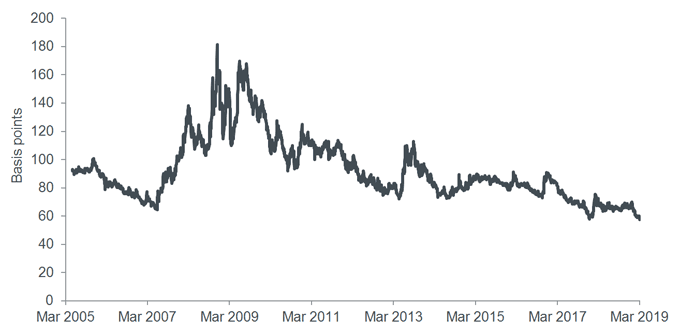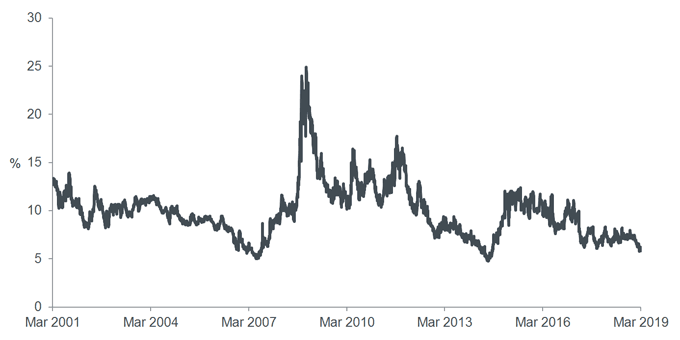Subscribe
Sign up for timely perspectives delivered to your inbox.
The Global Bonds team at Janus Henderson reflects on the decline in volatility and how asymmetry in market pricing could present opportunities.
So far, 2019 has seen a big rebound in risk assets with the weakness seen in Q4 a distant memory. The S&P 500 Index recorded its best January start to the year since 1987, and by 5 February the US high yield sector had recovered all of its Q4 2018 underperformance.
Chief among the reasons for the bounce in sentiment has been central banks, particularly the US Federal Reserve (Fed) and more recently the European Central Bank (ECB). With regard to the Fed, we have been in the camp that believes that they tend to overpromise and under deliver, so after the pivot to a more dovish stance in January, we take this to mean they are now going to be patient and flexible going forward.
As the market has moved to price in a Fed on hold, this has some important implications for portfolio positioning. We continue to expect the US yield curve to steepen as a result of the Fed easing off the pedal for future rate hikes, and the potential for pricing in future rate cuts, most likely in 2020. Moreover, while the pivot has helped to calm investor nerves, it has crushed volatility, and this also presents an opportunity.
The charts below show implied volatility on 10-year US rates (Figure 1) and the implied volatility on the US dollar as measured by the EUR/USD cross rate (Figure 2). The former is at historical lows over the last 14 years according to Bloomberg data.
How can this be explained? While some might say it could be justified by the very tight actual trading range of US 10-year Treasuries in February (just 9 basis points) and a Fed “on-hold”, it is a stretch to assume this can continue indefinitely. In addition, towards the end of Q4 2018 there was significant buying in Treasury options, which are only now being unwound exerting further downward pressure as shown in Figure 1 below.

Source: Bloomberg, 31 May 2005 to 13 March 2019, USD Swaption ATM NVOL 3-month 1year x 10 year

Source: Bloomberg, 14 March 2001 to 14 March 2019, EUR/USD 3-month ATM implied volatility
Our investment approach looks for asymmetry in pricing in global bond markets. We have sought to capture this in portfolios by buying options (for example on 10 year US rates) to the upside and downside, in expectation of a breakout over the next year. Given this entails paying a premium on both sides we set the bar relatively high for this type of trade, but believe this is justified by the current extreme levels of valuation. More subtly, this type of position is negatively correlated to some of the other risk positions in our portfolios, such as credit, providing broader diversification.
Within credit, we still see pockets of value but overall market valuations are now back towards their spread tights, especially in the US. We believe that the Fed is done with their hiking campaign and will move to a more balanced approach, which has led us to increase our level of duration (both in the US and globally) in 2019.